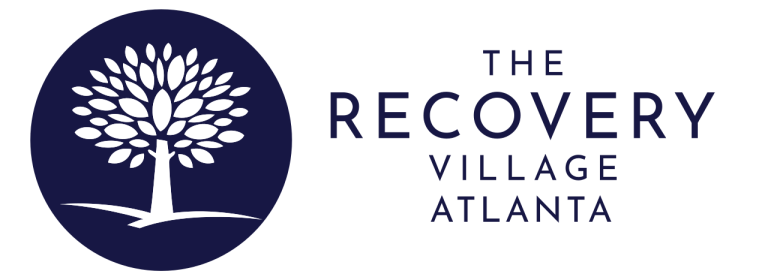Alcohol misuse can create significant consequences for the workplace. When people talk about the dangers of alcoholism at work, they typically refer to employees with signs of an alcohol use disorder, which is the clinical term for an alcohol addiction.
When someone has an alcohol use disorder, brain changes make it difficult for them to control their drinking. This means they may continue to drink, even if it interferes with their performance and functioning at work.
While numerous negative effects are associated with workplace alcohol abuse, viable solutions exist. With treatment, people with an alcohol use disorder can recover and return to being healthy, productive workforce members.
Alcohol Abuse Statistics Amongst Full-Time Workers
A recent study of full-time workers 18 and above found that 9.3% of this population met the criteria for an alcohol use disorder. Most of these individuals met the criteria for a mild alcohol use disorder, with only 1.2% of full-time workers having a severe alcohol use disorder.

It's time to get your life back.
If you are struggling with addiction and co-occurring mental health, our expert team is here to guide you every step of the way. Don’t wait— reach out today to take the first step toward taking control of your life.
Older research found the following occupations have the highest rates of heavy alcohol consumption:
- Mining (17.5% of workers report past-month heavy drinking)
- Construction (16.5%)
- Food services and accommodations (11.8%)
- Arts and entertainment (11.5%)
- Utilities (10.3%)
- Wholesale trade (10.2%)
- Management (9.9%)
- Manufacturing (9.7%)
- Agricultural trades (9.4%)
- Retail (9.0%)
- Transportation/warehousing (8.8%)
- Real estate (8.5%)
- Information services (8.1%)
Fields with especially low rates of heavy drinking include education, with 4.7% of full-time workers reporting past month heavy alcohol consumption, and healthcare/social services, where the prevalence is just 4.4%,
Regardless of the specific industry, workplace alcohol abuse can seriously affect an organization. For example, individuals without an alcohol use disorder miss an average of 13 work days per year, compared to 17.7 days for people with mild alcohol use disorder, 23.6 days for moderate alcohol use disorder and 32.3 days for severe alcohol use disorder.
Missed work and health problems arising from alcohol misuse can cause economic harm to workplaces because of reduced productivity and insurance costs.
Signs & Symptoms of Alcoholism in the Workplace
It’s important to be aware of warning signs that someone in the workplace is struggling with alcohol addiction because early intervention reduces the risk of long-term problems. Some signs of alcohol misuse in employees include:
- Using excessive amounts of sick time
- Showing up late or missing work without prior approval, especially if this is a new behavior for the employee
- Experiencing frequent emergencies that require absence from work
- Beginning to habitually miss work on certain days, such as Monday or Friday
- Significant conflict with coworkers
- Demonstrating belligerent or angry behavior
- Missing important deadlines
- Failing to meet productivity or quality requirements
- Falling asleep at work
- Smelling of alcohol during the workday
- Demonstrating withdrawal symptoms like tremors in the workplace
- In severe cases, showing signs of intoxication, such as unsteady gait or bloodshot eyes, while at work
Causes of Alcoholism in the Workplace
Multiple different causes of workplace alcohol misuse exist. Negative work experiences have been linked to heavy drinking and drinking during and after work. This means that factors like toxic work cultures and job dissatisfaction can increase the risk of alcohol misuse among employees.
In some cases, alcohol addiction has nothing to do with the workplace. For example, factors like mental illness, childhood trauma, genetics and family history of alcohol addiction can also increase the risk of an alcohol use disorder. For some employees, these risk factors may make them vulnerable to alcohol addiction, above and beyond anything happening in the workplace.
Industries at Risk for Alcohol Addiction
Certain industries are more likely to be impacted by employee alcohol misuse. Rates of heavy drinking are highest in industries including:
- Those requiring heavy physical labor, such as mining, manufacturing and construction
- Business management
- The entertainment industry
- Blue-collar trades like warehousing and utilities
- The real estate field
- Service-related occupations, such as retail, food service and hospitality
Consequences of Alcoholism on Employees & Employers
Unfortunately, when employees misuse alcohol, there are serious negative consequences for the employee and employer. Employees who misuse alcohol are at risk of accidents, injuries, risk-taking behavior and alcohol poisoning over the short term. Over the long term, they risk numerous health problems, including:
- Heart disease
- Stroke
- Cancer
- Depression
- Dementia
- Liver disease
- Immune system problems
Employers also suffer. Consider the following statistics related to workplace alcohol misuse:
- On-the-job injuries are more likely among employees who misuse alcohol.
- Absenteeism rates can be four to eight times higher among employees addicted to alcohol.
- Some research has shown that employees who misuse alcohol lose the equivalent of five working days of productivity per year.
- Employees who abuse alcohol are more likely to experience health problems and disciplinary issues.
Impact on Organization and Bottom Line
The negative effects of alcohol in the workplace undoubtedly influence an organization. Workplaces are often left dealing with increased health insurance costs among employees who have alcohol-related health problems. Missed time at work and lost productivity also comes with a cost to employers.
The costs of workplace alcohol abuse are staggering. Estimates indicate that the yearly expenses to employers range from $33–$68 billion, which result from a combination of factors, including lost productivity and healthcare expenses.
How the Workplace Can Help Employees Struggling With Alcohol Addiction
Given the high prevalence of workplace alcohol misuse, it’s important for employers to have a plan in place to address alcohol addiction. The following strategies can be helpful:
- Use Employee Assistance Programs (EAPs): EAPs provide employees access to resources to assist with personal problems, including addiction. An EAP can provide employees with short-term counseling or refer them to other alcohol addiction treatment resources.
- Offer information about resources and support services: Employees should have access to information about resources and supports available within the community, including counseling centers, support groups and rehab programs. The human resources department might consider keeping information about resources on file or display in visible areas, such as conference rooms and lobbies.
- Encourage employees to seek treatment: Employers should have a policy of encouraging employees struggling with alcohol addiction to reach out for treatment. Encouraging employees to seek alcohol addiction treatment benefits the organization. Research shows that when people enter recovery, their healthcare costs decrease by $536 per year, on average, and the reduced rates of turnover that result when people enter treatment and keep their jobs can save workplaces upwards of $4,000 a year. The average cost savings per employee per year when someone recovers is $3,200, an investment worth making.
- Establish clear policies related to workplace substance misuse: It’s essential to have clear guidelines for drug and alcohol abuse in the workplace. Within these policies, it’s helpful to have a plan for giving employees a “second chance” if they are struggling with alcohol addiction. This second chance could involve requiring the employee to enter treatment and provide proof of successful treatment completion. They may also be required to sign a return-to-work agreement stipulating they must remain substance-free or face losing their job.
Treatment Options for Alcohol Addiction
When employees are struggling with alcohol addiction, they should receive professional treatment. Treatment typically begins with medical detox to help patients manage alcohol withdrawal symptoms. Next, they will enter an ongoing program of recovery.
Alcohol rehab may occur on an inpatient basis, requiring patients to live on-site at a treatment facility or as an outpatient program, in which patients continue to live at home while receiving treatment at a clinic or medical facility. In either instance, patients will receive services, such as medical oversight and individual and group therapy.
After completing a treatment program, employees should stay connected to the recovery community through an aftercare plan. This may involve continuing to attend support group meetings or routine counseling appointments.










